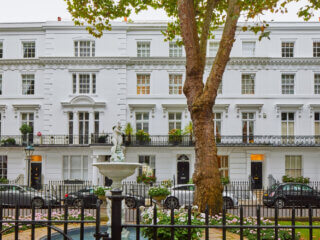
Starchitecture Needs to Take a Reality Check in 2017
04.01.17Colourful and chaotic, a hive of life in the midst of sedate Singapore, Little India has always been regarded as something of a loose cannon. But the enclave has a signature civic centrepiece that can now hold its own with the shiny architectural marvels elsewhere in the city-state. Coming in at a cool USD14.24 million, the Indian Heritage Centre certainly stands out from the surrounding faded shops, markets and curry restaurants. Designed by acclaimed practice Greg Shand Architects, the building houses art galleries, educational and community spaces and is the first museum of its kind dedicated to the Indian community in Singapore.
The striking structure with its distinctive glazed geometric façade is an example of how planners continue to use cultural centrepieces to build the brand value of global towns, cities and urban areas within them.
Museums, art galleries, and other cultural and civic projects have been used to bolster prestige for millennia. Indeed, the first ever museum popped up in Alexandria in Egypt as far back as the 3rd Century BC. In recent years, however, the desire for new and often eye-wateringly expensive civic architecture has become ever more irresistible bit not always desirable. Much of this is down to what is known as the “Bilbao effect.
In essence, it is the terrific economic effect a showpiece museum like the Guggenheim’s outpost in Bilbao, Spain, can have on a town. According to The Economist, the Spanish town raked in more than USD110 million in its first three years in taxes alone; in 2016 over one million people visited.
This has given town planners and tourist boards alike the idea: invest in big-scale projects. But the knock-on benefits may not be as immediate and obvious across the world as hopeful planners think.
The idea has been that such places are, fixed cost excepted, always going to be beneficial to the community. These showpieces can often drain their surrounds. The push-pull effect of them upon a city and a city upon them is complicated.
"Few cities command the accolade ‘great’ or even ‘liveable’ without a significant cultural presence. Successful cultural districts are therefore powerful policy tools. But they are difficult to get right, and expensive and politically embarrassing to get wrong,” wrote Adrian Ellis, a global thought leader in international arts and culture, in The Art Newspaper, a month after the Global Cultural Districts Network, launched at the New Cities Summit in Sao Paulo.
Asia has good and great examples of successful civic architecture. In Singapore the new Indian Heritage Centre is the latest in a succession of projects that includes The Esplanade – Theatres on the Bay, an acclaimed performing arts centre. In Hong Kong, meanwhile, the M+ in Kowloon, a giant museum of visual culture due to open in 2019, is eagerly awaited.
Other initiatives, however, have failed to set pulses racing quite so quickly. China went on such a museum-building spree that it fulfilled its new museum quota three years early but many lay empty of both visitors and artefacts.
Meanwhile, both Myanmar and Kazakhstan have built entire cities – Naypyidaw and Astana – to exemplify what their rulers see as national ideals, yet both have an odd, empty feel, cluttered with large monuments but little real culture.
Possibly Ellis had it right when he wrote: “A successful cultural district is not one that is built, but one that, once built, thrives and animates the city or region that it serves.”
And with the “Bilbao effect” continuing to be a huge factor in thinking, the likelihood of more grandiose projects – successful or otherwise – is as set in stone as the Ashmolean Museum in Oxford, the first purpose-built public museum in the world. And that's one of the good ones.
Abode Affiliates
COPYRIGHT © Abode2 2012-2025






















































































































































































































